Week 4: Beginner
Scroll down to study the birds by sight and sound, and then take the quiz.
Week 4 Birds
American Coot, Mallard, California Quail, Canada Goose
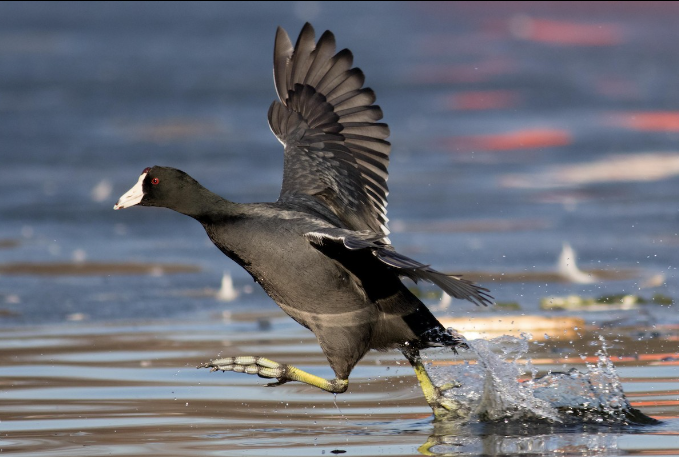
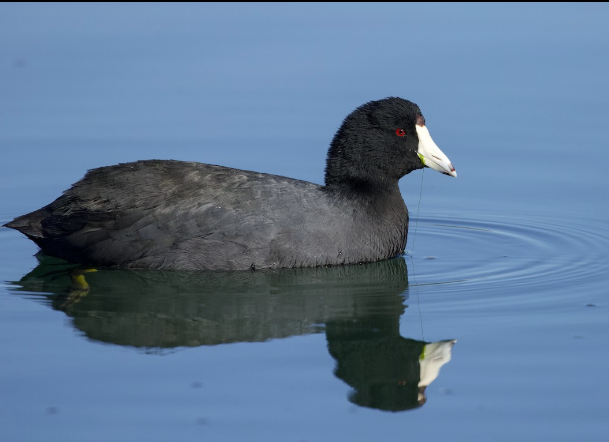
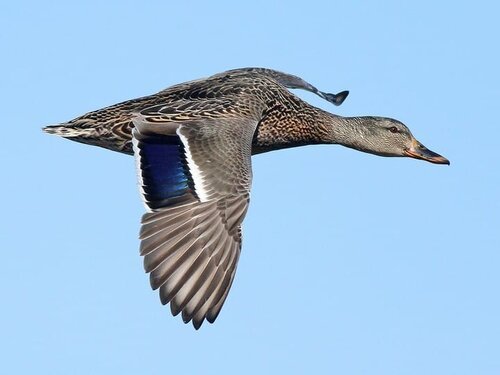
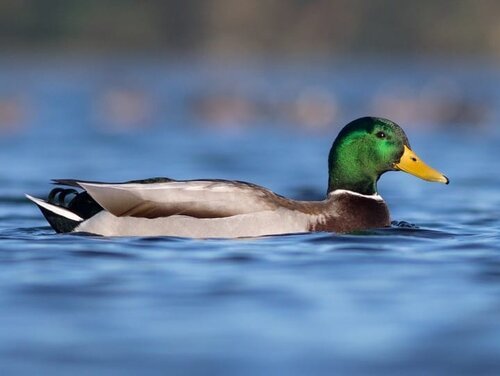
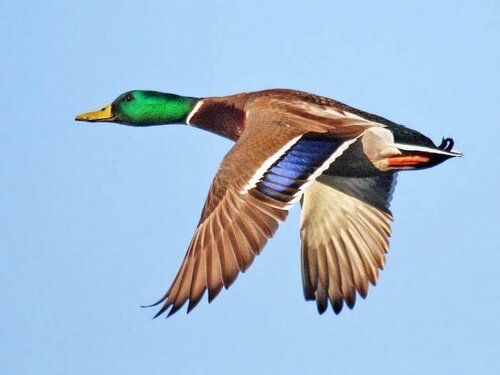
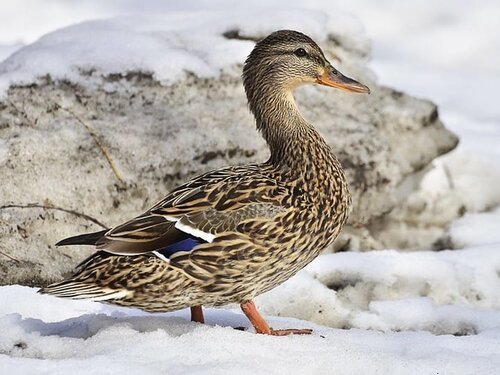
AMERICAN COOT
Bird Code: AMCO
Identify this bird by…
A strange member of the Rail family that acts like a duck: a plump bird with a relatively thick neck, rounded head, and sloping bill
Adults are dark gray/black with a white bill. Juveniles are dull gray-brown.
They often bob their head while swimming.
Listen for…
Call: a variety of grunting and croaking noises. They commonly give a short single note “krrp” or “prik” call
Resources:
MALLARD
Bird Code: MALL
Identify this bird by
Large ducks with hefty bodies, rounded heads, and wide, flat bills
Like many “dabbling ducks” the body is long and the tail rides high out of the water, giving a blunt shape
Both sexes have a white-bordered, blue “speculum” patch in the wing
Tell males and females apart by…
Males: Have a dark, iridescent-green head and bright yellow bill. The gray body is sandwiched between a brown breast and black rear
Females & Juveniles: Mottled brown with orange-and-brown bills. Both sexes have a white-bordered, blue “speculum” patch in the wing
Look for…
Behavior - Mallards are “dabbling ducks”—they feed in the water by tipping forward and grazing on underwater plants
Listen for…
Call: The female Mallard gives the quintessential duck quack: often as a series of 2-10 quacks that begin loudly and get softer. The male mallard gives a quieter, rasping one-or two-noted call.
Resources:
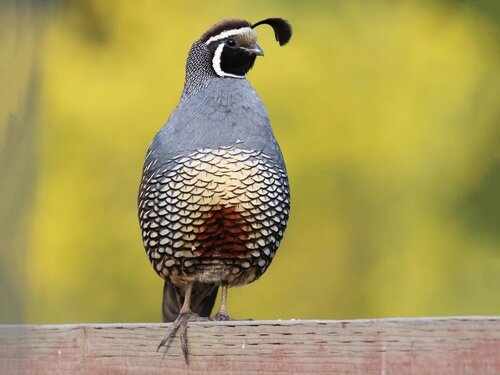
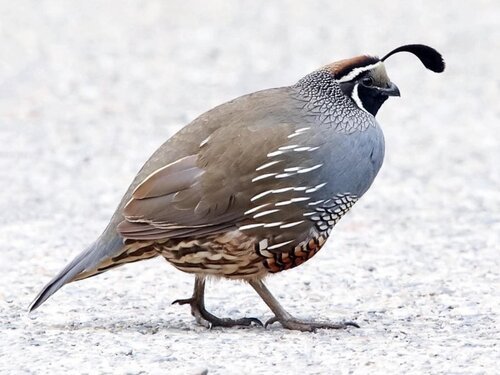
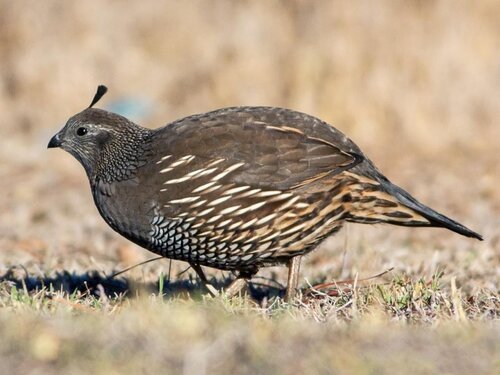
CALIFORNIA QUAIL
Bird Code: CAQU
Identify this bird by…
Plump, short-necked game birds with a small head and bill
The tail is fairly long and square
Scaled black and white belly
Both sexes have a comma-shaped topknot of feathers projecting forward from the forehead, longer in males than females
Tell males and females apart by…
Females are brownish gray on the neck and face, lacking the males strong head markings
Males are rich gray and brown, with a black face outlined with bold white stripes
Look for…
Behavior - Spend most of their time on the ground, walking and scratching in search of food. In morning and evening they forage beneath shrubs or on open ground near cover. They usually travel in groups called coveys. Their flight is explosive but lasts just long enough to reach cover.
Listen for…
Calls: main call consists of three syllables and sounds like the bird is saying Chi-ca-go. The call lasts about 1 second and can be given 10 times or more in succession. They also use a repeated pit-pit alarm call to alert covey members of nearby danger
Resources:
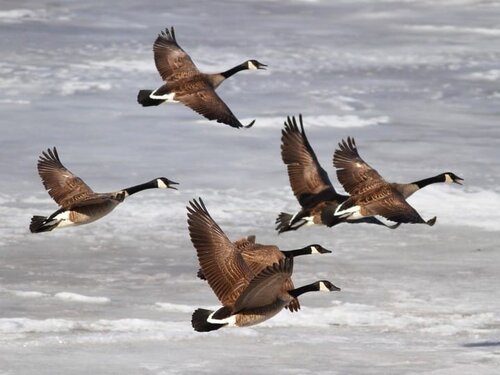
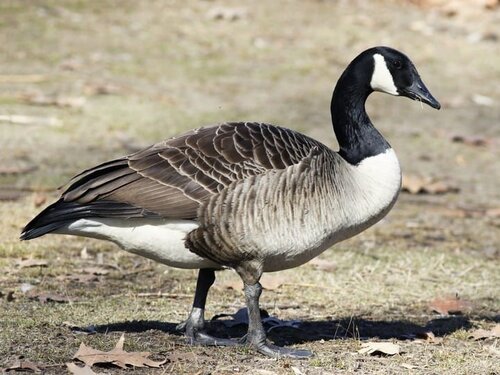
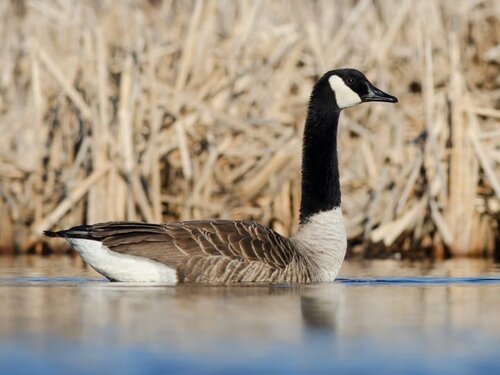
CANADA GOOSE
Bird Code: CANG
Identify this bird by
Big waterbirds with a long neck, large body, wide flat bill
Large webbed feet
Tell it apart by…
Black head with white cheeks and chinstrap
Black neck, tan breast, and brown back
In flight, you can see a prominent white “U” on the upper part of their tail
Look for…
Behavior - feed by dabbling in the water or grazing in fields and large lawns. They are often seen in flight moving in pairs or flocks; flocks often assume a V formation
Listen for…
Call: Various loud honks, barks, and cackles. Also some hisses
Resources:
